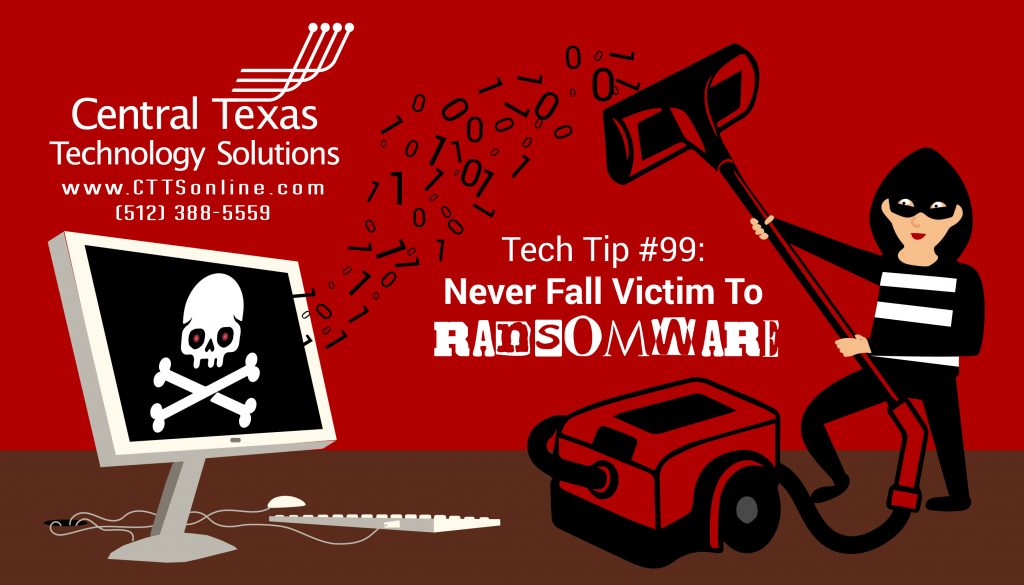 In the past year, the average cost of downtime was $46,800. While the average ransomware attack comes out to $4,300. If you’re a business owner, these numbers should serve as a wake-up call, because either way, being caught without the proper cybersecurity processes in place is still a waste of resources and time.
In the past year, the average cost of downtime was $46,800. While the average ransomware attack comes out to $4,300. If you’re a business owner, these numbers should serve as a wake-up call, because either way, being caught without the proper cybersecurity processes in place is still a waste of resources and time.
If you’re not familiar, ransomware is a type of malware that blocks or limits access to your computer or files, and demands a ransom be paid to the scammer for them to be unlocked. Infected computers often display messages to convince you into paying the ransom. Unfortunately, as the amount of ransomware attacks continue to increase, it is apparent that no single solution is guaranteed to prevent ransomware attacks, a multilayered approach is highly recommended.
That’s why we’ve put together this list of the top 5 ransomware delivery methods and cybersecurity vulnerabilities you MUST be aware of if you want your company to stand a fighting chance:
- Email Phishing – Phishing is a fraudulent attempt by cyber criminals to collect sensitive information by pretending to be a trustworthy company or person you work with on a daily basis. As email continues to be the #1 delivery vehicle for most malware, always think twice before clicking on email links or downloading attachments. Be suspicious of any email or communication (including text messages, social media post, ads) with urgent requests for personal financial information. You should only communicate information such as credit card numbers or account information via a secure website or telephone. When in doubt, just contact the sender for clarification.
- Lack of End User Cybersecurity Training – Almost 90 percent of cyber-attacks are caused by human error or behavior. It’s critical that businesses educate employees on the importance of protecting sensitive information and what malicious threats to look out for. Simply going over online security basics and computer best practices on a quarterly or semi-annual basis can help users understand and keep in mind the important fundamentals to keep your company data safe and secure. If you need help establishing a cybersecurity curriculum for your employees, reach out to us today, we’d be happy to help or even provide a free cybersecurity training for your employees.
- Weak Password Management – All protection begins with a password, the staple of all our accounts. Simple and less-secure passwords put user accounts and your business at risk. If you want to reduce the chances of someone accessing your account. Choose a password, or rather a passphrase, that's long enough, includes numbers, symbols, capital letters, lower-case letters and change it every 60-90 days. You can use a free or low-cost password manager to document all your passwords and keep them secure such as LastPass, KeePass, SplashID, 1Password. While using strong passwords lowers overall risk of a security breach, strong passwords do not replace the need for other effective security controls.
- Malicious Websites / Ads – Malware can get onto your computer in a number of different ways, like downloading free software, visiting a website that’s infected with malware, clicking a fake error message or popup window, or opening an email attachment. By keeping your computer and software updated, limiting file sharing, and thinking twice before clicking links or downloading anything, you can greatly reduce the risk of infecting your computer or device.
 When all else fails, it’s good to have a backup and disaster recovery plan in place to maintain operations despite a ransomware attack or other malware infection.
When all else fails, it’s good to have a backup and disaster recovery plan in place to maintain operations despite a ransomware attack or other malware infection. - Clickbait– The first rule of the internet is to never click unfamiliar links. The headline typically contains over-the-top phrases like “You’ll Never Believe” and “This Amazing Thing.” It may be a surprising way to save money, a harmful substance found in all homes that can kill your children, or an interesting story you just have to find out what happened. The problem is that not all clickbait is harmless. Instead of getting information promised, you can inadvertently download malware that opens the door for any cybercriminal to access your computer and your private information.
So, what’s the current state of your company’s digital security?
Do you have systems in place to protect your business continuity, ensure ongoing networking, and provide secure file collaboration and backups in the event of a ransomware attack?
If you would like to learn more about how you can avoid ransomware and ensure the continuation of your business operations during any type of disaster, download our Free Report: CEO? Here’s why you care about Business Continuity and Disaster Recovery: 4 Undeniable Reasons to Care about BCDR. In this report you’ll discover 4 critical reasons that you, the CEO, care about business continuity and disaster recovery. If you have any questions, reach out to us today at (512) 388-5559.

By Josh Wilmoth
CEO, Central Texas Technology Solutions
